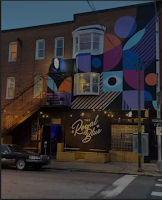Jessup Correctional Institution (JCI)
My name is Shelby Norton and I am an Interdisciplinary Sculpture. During my freshman year I took a class called
Community Arts Partnership (CAP): Finding Baltimore. An advocate for
restorative justice came to talk to the class with a psychologist from the city
jail. He liked what we were doing in the class and arranged for us to meet with
the art group at Patuxent Institution in Jessup, MD. It was a pivotal moment
for the way I view art and my career path. To this day, Dr. McCamant is a dear
friend and mentor. I worked with him for a year through the CAP program at the Baltimore
City Detention Center in the ward of psychiatric health as an art therapy
intern building community. The jail was in unrest with Big Gorilla Family (BGF)
scandals, and Dr. McCamant had been petitioning against some of the warden’s
unjust decisions when he was asked to resign from that position. He continued
to work for the state at JCI, but I didn’t work with him for a full year. I was
interested in getting back into the line of work, but was out of touch with Dr.
McCamant. I heard that a MICA professor, Mikita Brottman, was doing groups at
JCI, so I contacted her and asked to be her intern. After it was approved, I
invited both Dr. McCamant and Mikita to an art opening at Gallery 405 where
they met and discussed working together.
JCI was a very different experience. The security at
the front gate, similar to BCDC, was as tight or as loose as the guard felt
necessary. The security on the tier was much more safe. Though it was
aggravating to have Sgt. Lynn breathing down my neck about bringing nothing in
and taking nothing out (including art materials), I felt safe knowing she was
down the hall and paying attention. Only on one occasion when Sgt. Lynn wasn’t
in and Sgt. Moore was assigned to the tier did I leave the classroom to realize
there wasn’t a guard anywhere nearby, and by this time I felt 110% safe with
the men. It was my job, if I wanted it, to run the Art Group with Renaissance
Ren. For these groups it took me a few days to figure out what exactly the men
wanted me to contribute to the pre-existing weekly meeting, but I quickly
realized that they wanted to be exposed to some of the institutional education
I have been privileged to have. I was hesitant to go in and take over when they
already had a good thing going, but they like the structure and the pace of the
lessons and critiques modeled after some of my professors at MICA. We did quick figure drawing, gesture, and
portrait lessons to try to break down some of the photo-realistic habits in the
room. We created two zines as a group to be distributed in the library and at
the Alloverstreet event at the Copycat building in Station North. We also
conducted group critiques at the end of the semester to discuss the personal
directions of each artist. At the literature group on Tuesdays I act as Mikita’s
intern, taking notes from the group, facilitating discussions about the
readings, and transcribing recordings from Clifton Perkins Forensic Hospital
which I do not have clearance to attend. I had the perfect balance of observing
by being an intern for one group and putting into practice my leadership skills
in the other
I am the most proud of the ways in which I have grown
and adapted to a new group of men with very different needs than the detention
center. The men in this group are artists, just as I am. They all have very
different interests and needs, which was a challenge to accommodate in each
lesson, but by the end of the semester I think I was able to be of some value
to each student in the room, if nothing else as a resource with access to the
MICA library. I am proud every time one of the guys thanks me and tells me that
they hadn’t seen the guys this energetic about their art in years.
I love this work. I can see myself continuing to
volunteer in this line of work throughout my career. I don’t think I will ever
work for the institution as an employee after seeing what an uphill battle it
has been for Dr. McCamant. I have seen from the detention center that I love
the therapeutic potential of art in a group, and at JCI I have learned to value
the therapeutic benefits as an individual process for the artist that may take
the form of any other kind of expression for a different individual. As a
therapist I hope to be able to relate to all forms of expression rather than
burrowing myself in the niche that is art therapy. Art therapy is something the
men were doing at JCI long before I arrived on the scene.






